
Mussel Rescue!
Tropical Storm Damages
Parks and Strands Wildlife
September 2011
Two reports on the aftermath of Tropical Storm Lee along Accotink Creek:
On Saturday, I walked along Accotink Creek south of the LAP dam to view the damage from the flood on Sept. 8, 2011, from Tropical Storm Lee. I recorded 9.25 inches of rain for the 24-hour period from Wednesday evening to Thursday evening (rain gauge in my yard in Springfield). On Sept. 8, the lake overtopped the dam by 6 feet (according to Park staff) and flooded the lower parking lot with a raging torrent, probably 9 feet deep. Much of what was left of the pavement after Tropical Storm Hannah in 2008 was washed away. Several signs were bent over or washed out completely, and a dumpster at the far end of the parking lot was washed away from the fenced compound. The entire flood plain was underwater to Old Keene Mill (and probably farther south, but I walked only as far as Byron Park). The photos show blocked culverts (these were built only 3 years ago and were not designed for a flood plain, although they are clearly in one). Serious erosion is now occurring around the sides of the culverts, because the water was forced out of the tributary paths due to blocked culverts.
The trail at the foot of the dam was repaved recently, but that new asphalt was washed away on Thursday. That asphalt is now in Accotink Creek (some chunks were still visible in the water) or in the Potomac River. This is an example of poor planning by the Park Authority. That stretch of trail is the most vulnerable to flooding. A washout was inevitable, and the dangerous chunks of asphalt were left to do further damage downstream.
Byron Park had a huge old log (at least 3 feet dbh (diameter breast height) and 20+ feet long) washed onto the chain link fence, and the playing fields were washed over. Much of the chain link fencing was bent over.
A side tributary that feeds into Accotink mainstem along Essex Avenue washed out the north end of Middlesex Road. The water main to the lower end of Essex Avenue homes was shut off overnight. The road is now impassable at that end with a huge gap washed out (see photo), although the water service was restored.
Although the rain event was significant, the damage was much more severe than it should have been with better planning by the county, state, etc. The I-495 HOT lane construction caused the clearing of many acres of trees and corresponding impervious paving upstream. The pavement at LAP caused an imperious surface for water to speed across. Alongside the paved Cross County Trail, the ground was visibly scoured. Away from the trail, the vegetation clearly shows the slowed water, and erosion was reduced. Much of the damage from this rainfall event could have been prevented with better planning.
Text and Photos by Susan Jewell

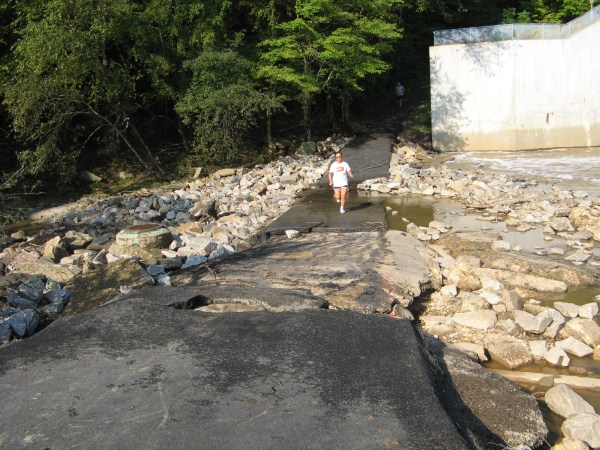


sturdy survivor of many floods.
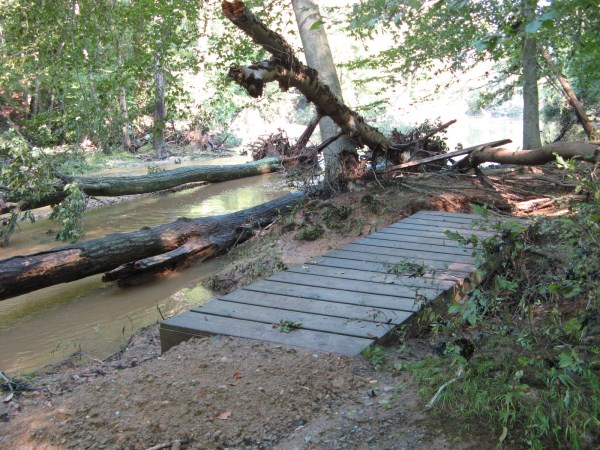
These new culverts are perennially blocked by debris.

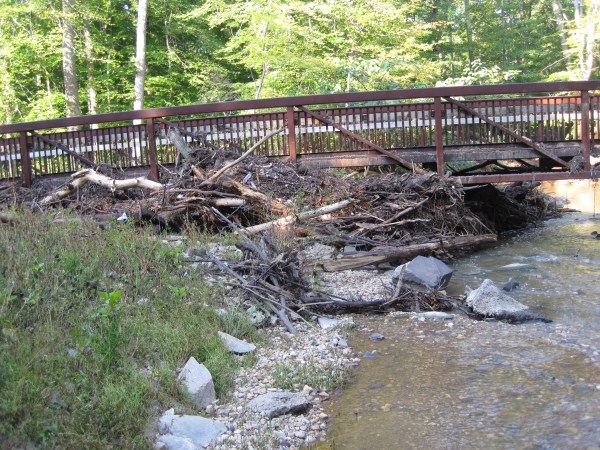

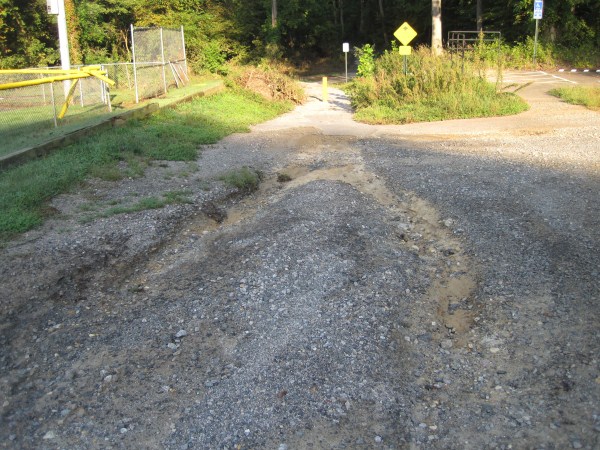
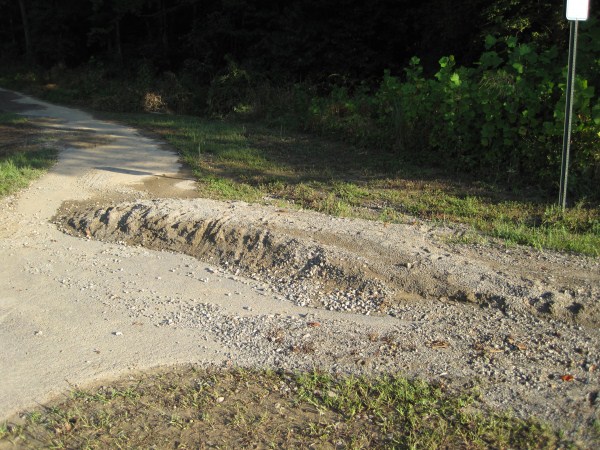
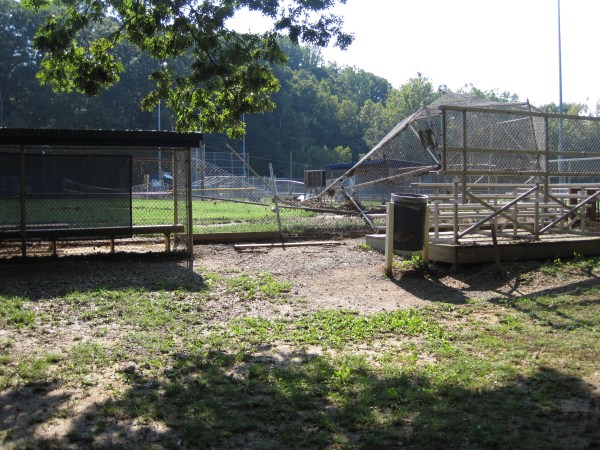

On Saturday, September 10th, 2011, closure of the park entrance for flood damage repairs fored us to cancel our scheduled stream monitoring session. Instead, we turned the morning into a wildlife rescue operation for creatures displaced from the creek by the floods. We rescued 60-plus freshwater river mussels Eliptio Complanata which had been left stranded above the waterline. In the water mussels are capable of moving by opening their shells and laboriously dragging themselves along with their one "foot". Out of water all they can do is shut themselves up tight and hope to conserve moisture until the water rises again. Or they can use their foot to burrow down seeking the water under the sand. We were gratified to find that there were numerous juvenile mussels found. We had previously feared that no mussel reproduction was occuring in Accotink Creek because we had encountered only adults, but no juveniles. We also managed to help out a few fish stranded in puddles.
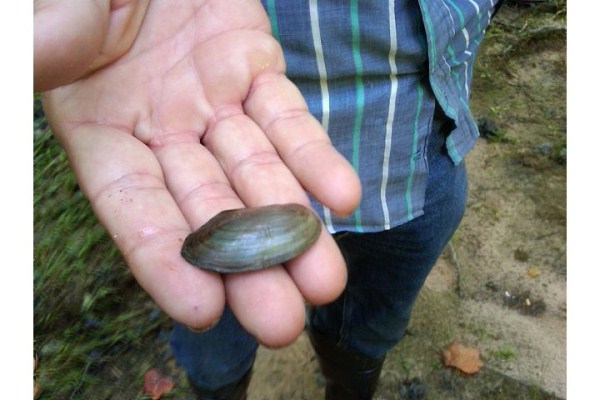


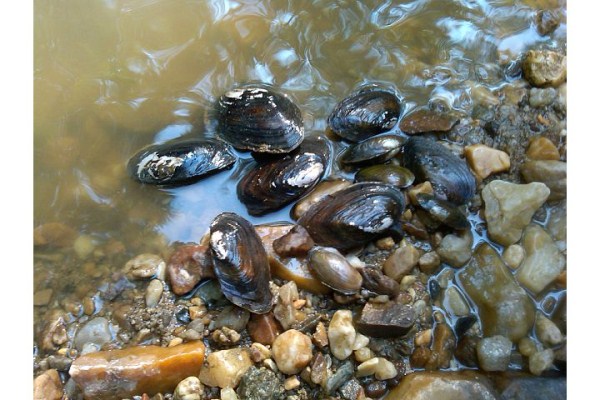
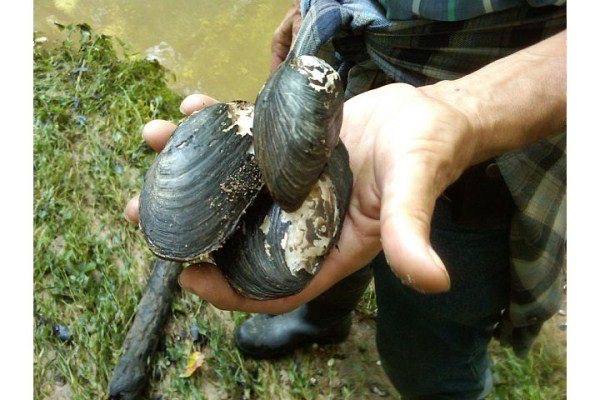

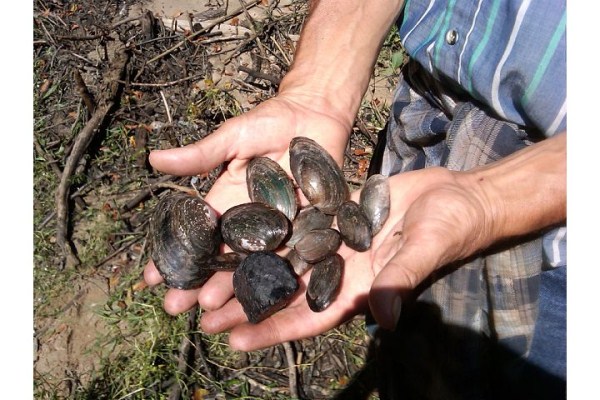
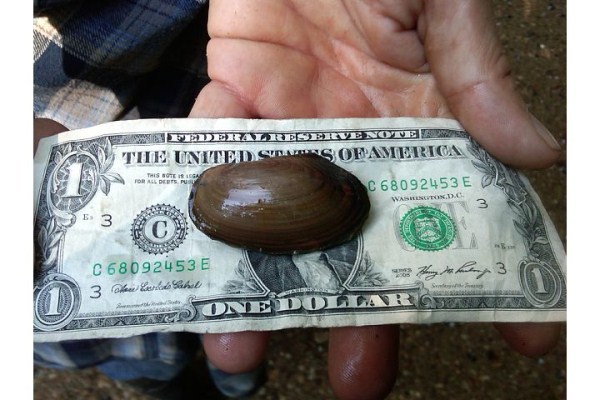
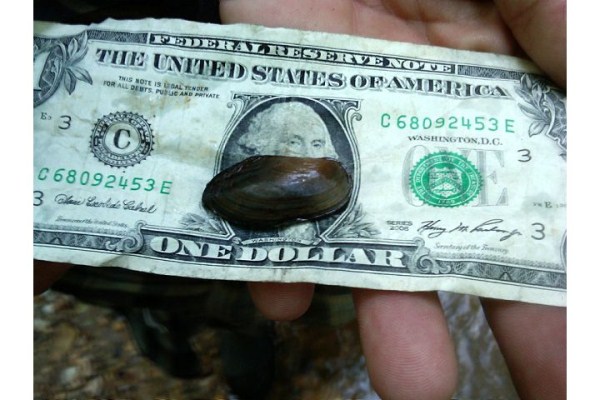
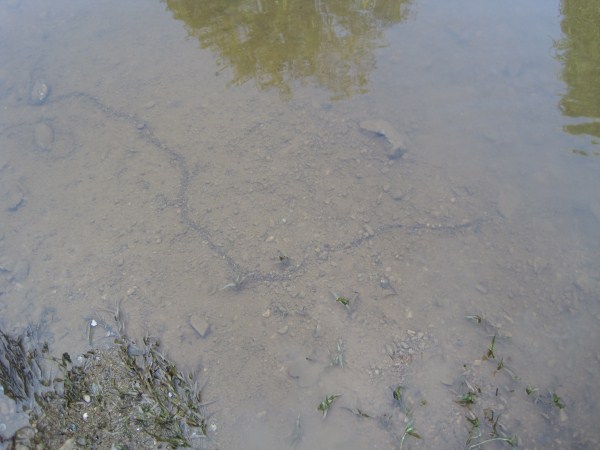

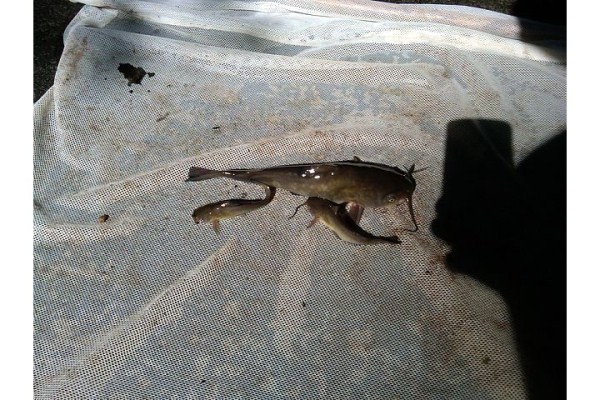
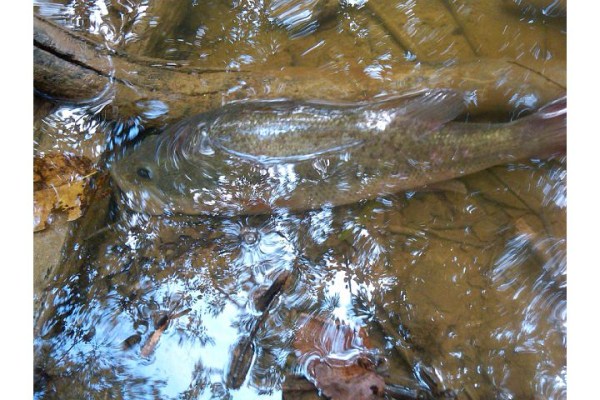
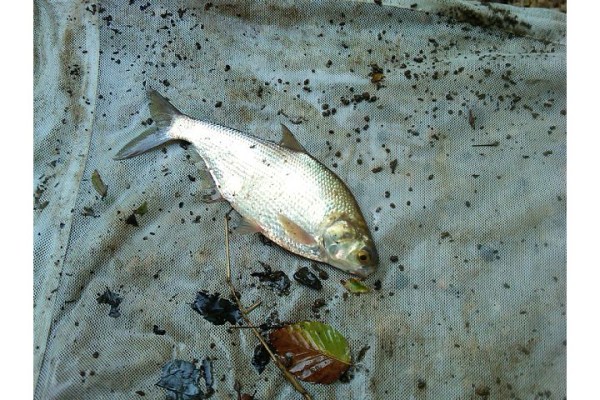
Have a story to share? Contact Friends of Accotink Creek, E-mail.